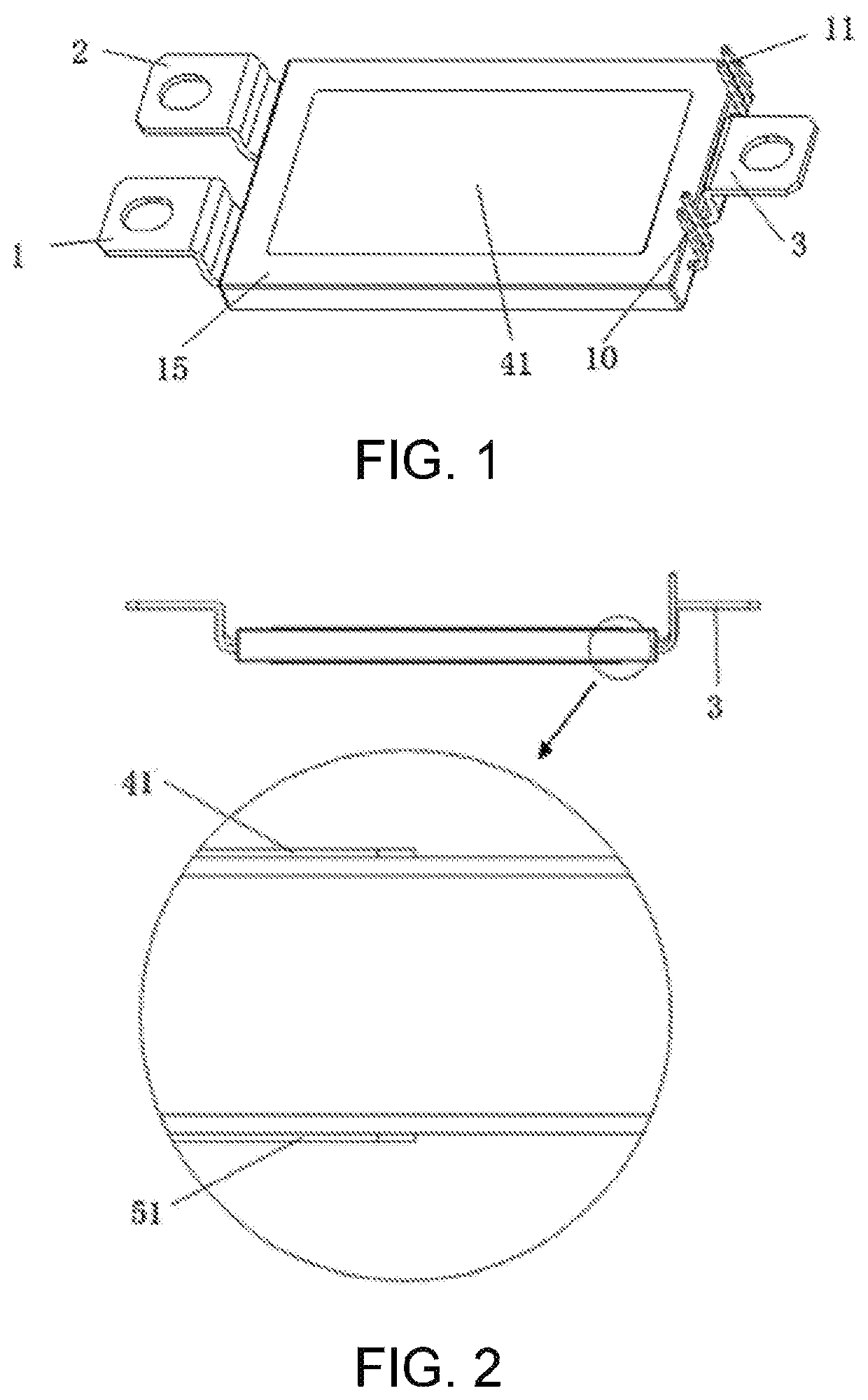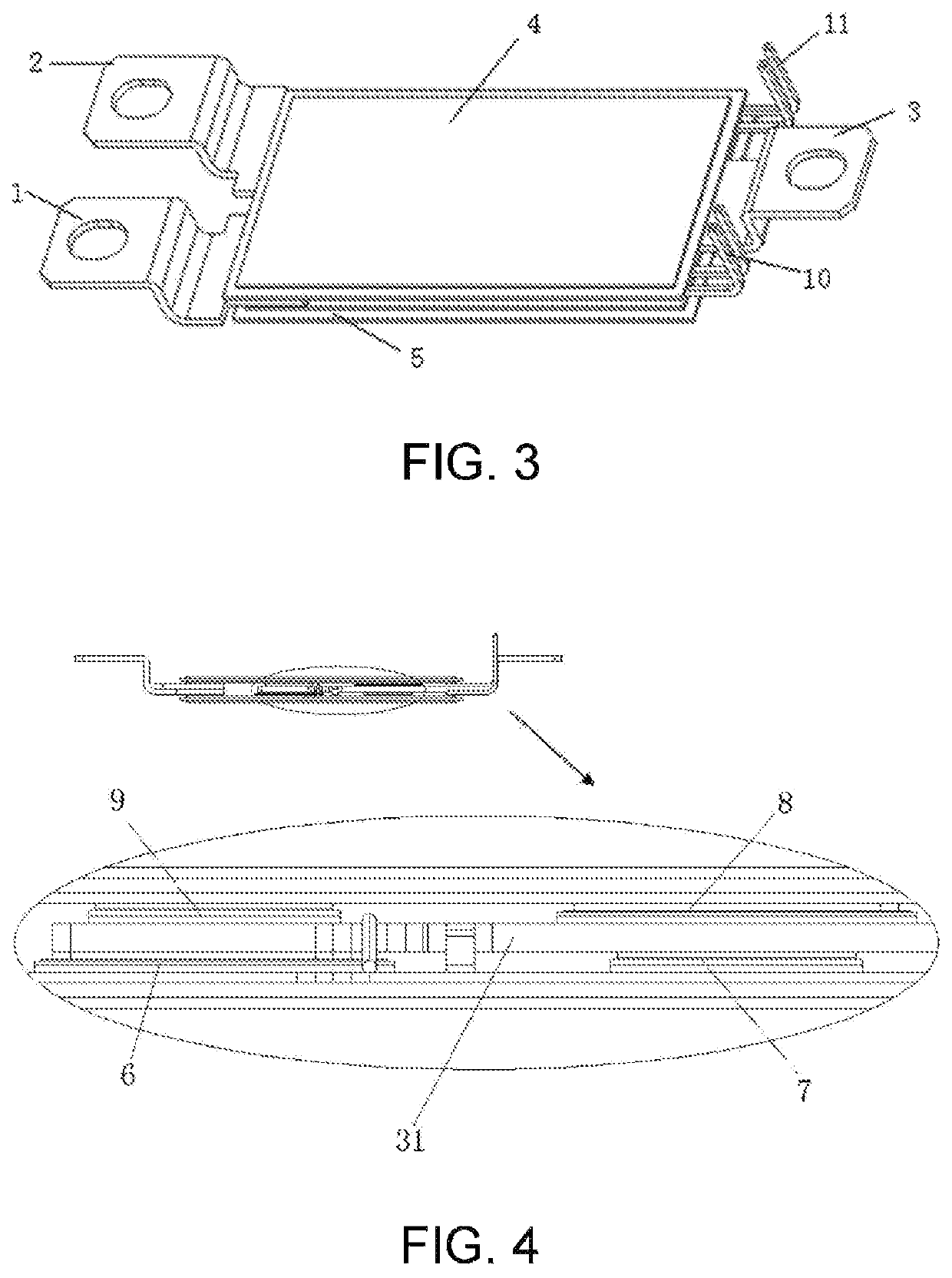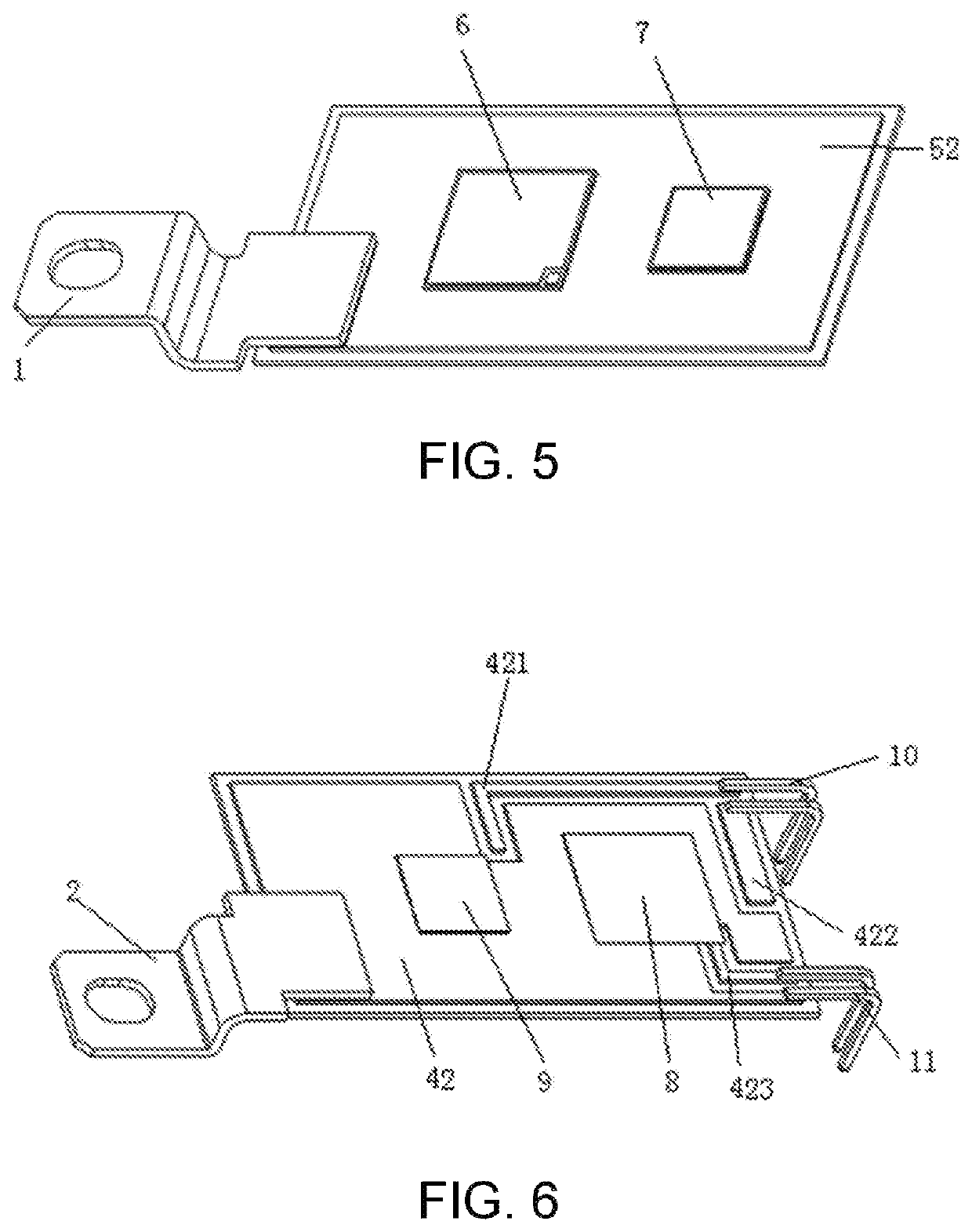Low parasitic inductance power module and double-faced heat-dissipation low parasitic inductance power module
a power module and low parasitic inductance technology, applied in the field of power modules, can solve the problems of large package volume, heavy weight, and inability to meet the requirements of high power density and light weight, and achieve the effect of reducing the parasitic inductance of the loop, reducing the volume of the power module, and saving costs
- Summary
- Abstract
- Description
- Claims
- Application Information
AI Technical Summary
Benefits of technology
Problems solved by technology
Method used
Image
Examples
embodiment 1
[0065]According to the invention, a switch chip and a freewheel diode chip of a relative bridge arm are stacked, so that a commutating loop path is shortest, thereby greatly reducing a parasitic inductance of the loop. The purpose of double-faced heat dissipation is achieved by arranging heat dissipation paths on both sides of the stacked chips, thus further reducing a thermal resistance of a power module.
[0066]As shown in FIG. 1, a double-faced heat-dissipation low parasitic inductance power module includes a positive power terminal 1, a negative power terminal 2, an output power terminal 3, a bottom metal insulating substrate 5 connected with the positive power terminal 1, a top metal insulating substrate 4 connected with the negative power terminal 2, an upper half-bridge driving terminal 10, a lower half-bridge driving terminal 11 and a plastic package shell 15 used for encapsulating. The positive power terminal 1 in the embodiment is sintered on the bottom metal insulating subs...
embodiment 2
[0076]As shown in FIG. 14, the structure of this embodiment is basically the same as that of Embodiment 1, but differs in that the welding portion of the output power terminal 3 in the embodiment is a matrix 311 at a position contacted with the chip, and is a three-layer structure at a position not contacted with the chip, the matrix 311 is located in a middle layer, and fillers 312 are located at upper and lower sides. The matrix 311 is metal molybdenum or tungsten copper with small thermal expansion coefficients, and the filler 312 is metal silver with good conductivity.
[0077]In this embodiment, the power chip is sintered on the molybdenum matrix 311 of the output electrode, and a groove is machined in a part of the output electrode that is not contacted with the chip, and the groove is filled with silver. The thermal expansion coefficient of the metal molybdenum is generally one third of that of copper, which is close to that of the chip. During the operation of the power module,...
embodiment 3
[0078]As shown in FIG. 15, the structure of this embodiment is basically the same as that of Embodiment 1, but differs in that a stress buffer layer 14 is filled between the welding portion 31 of the output power terminal 3 and the chip, the welding portion 31 of the output power terminal 3 is metallic copper, and the stress buffer layer 14 is metallic molybdenum or tungsten copper.
[0079]The output electrode is made of pure copper. Due to a larger difference in thermal expansion between the copper and the chip, in order to improve the long-term reliability of the pad layer 16, the stress buffer layer 14 is added between the chip and the output electrode for transition in this embodiment, i.e., metal molybdenum or tungsten copper is sintered on the surface of the chip, and then molybdenum or tungsten copper is sintered on the output electrode.
PUM
 Login to View More
Login to View More Abstract
Description
Claims
Application Information
 Login to View More
Login to View More - R&D
- Intellectual Property
- Life Sciences
- Materials
- Tech Scout
- Unparalleled Data Quality
- Higher Quality Content
- 60% Fewer Hallucinations
Browse by: Latest US Patents, China's latest patents, Technical Efficacy Thesaurus, Application Domain, Technology Topic, Popular Technical Reports.
© 2025 PatSnap. All rights reserved.Legal|Privacy policy|Modern Slavery Act Transparency Statement|Sitemap|About US| Contact US: help@patsnap.com



